Introduction
Cloudron is a platform designed to simplify the installation and management of applications on your server, including popular apps like WordPress, Rocket.Chat, Nextcloud, GitLab, and more. It automates key tasks such as database provisioning, DNS configuration, certificate management, centralized user management, and automated backups.
In this guide, we will walk you through the steps to install the latest version of Cloudron on Ubuntu 22.04 and 24.04.
Important Note: Cloudron can only be installed on KVM servers (Linux VPS). This guide is not applicable for Container or Storage VPS.
System Requirements
Operating System: Ubuntu 22.04 or Ubuntu 24.04
Virtualization: KVM
RAM: At least 2 GB
Storage: At least 20 GB
Open Ports: 80 and 443
You'll need to create a subdomain (e.g., my.domain.ltd) and point it to your server's IP. This subdomain will be used to access the Cloudron dashboard.
Additionally, both the domain’s A record and wildcard A record should point to your server’s IP address.
Cloudron supports both IPv4 and IPv6 by default. If you want to use IPv6, ensure you create AAAA records for the subdomain, main domain, and wildcard. If you don’t need IPv6, you can disable it during installation.
Installation Guide
1. Update Your System
Begin by updating your system with the following commands:
apt update && apt upgrade -y
2. Open Ports 80 and 443
Allow traffic on ports 80 and 443. You can use either IPtables or UFW (Uncomplicated Firewall) based on your configuration.
IPtables:
Run the following commands:
iptables -I INPUT -p tcp --dport 80 -j ACCEPT
iptables -I INPUT -p tcp --dport 443 -j ACCEPT
To save these changes, install iptables-persistent:
apt install iptables-persistent
iptables-save | tee /etc/iptables/rules.v4
UFW:
If you're using UFW, run these commands:
ufw allow 80/tcp
ufw allow 443/tcp
ufw reload
3. Install Required Dependencies
Install dependencies like curl and bash-completion:
apt install curl bash-completion -y
4. Install Cloudron
To install Cloudron, run the following commands:
wget https://cloudron.io/cloudron-setup
chmod +x cloudron-setup
./cloudron-setup
These commands will install Docker, configure the firewall, and set up all necessary components. The process may take some time.
After installation, the server will need to reboot to apply the settings. You will be prompted to reboot—press "Y" to continue.
5. Configure Cloudron
After installation and reboot, open a web browser and visit https://your_server_hostname (replace with your actual server's hostname).
You may see a warning regarding potential risks, which is normal since the Cloudron configuration page isn’t secured with SSL by default. SSL will be installed automatically later.
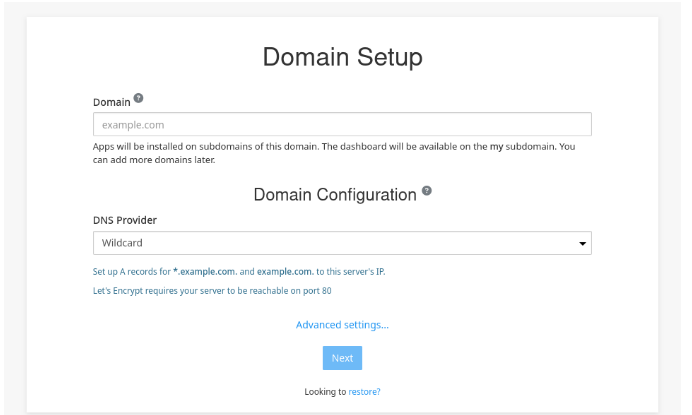
On the configuration page, enter your domain name. Both the domain (e.g., domain.tld) and wildcard subdomain (e.g., *.domain.tld) should point to your server’s IP.
Select your DNS provider (e.g., Cloudflare, DigitalOcean, etc.). If your provider is supported, Cloudron can auto-configure DNS. Otherwise, select the Wildcard option.
If you don’t need IPv6, click "Advanced Settings..." and disable IPv6.
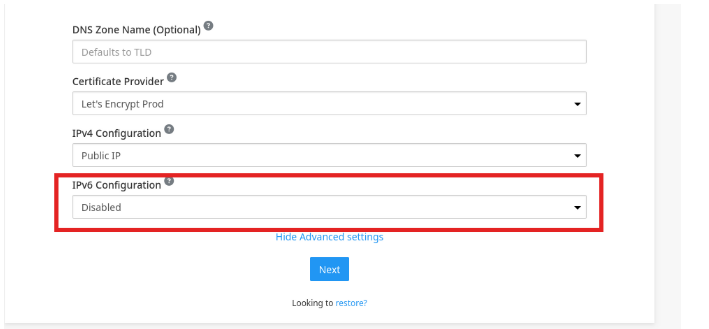
If you need IPv6, make sure to create AAAA records for your subdomain, main domain, and wildcard pointing to your server’s IP.
Click Next to proceed.
If everything is correct, you’ll be redirected to the "Welcome to Cloudron" page.
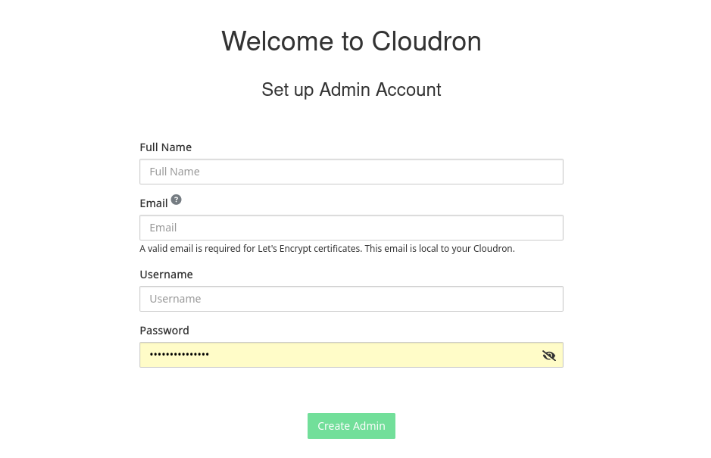
On this page, you can create your Cloudron user by entering your name, email, username, and password. Click Done.
After that, click Proceed to Dashboard to continue.
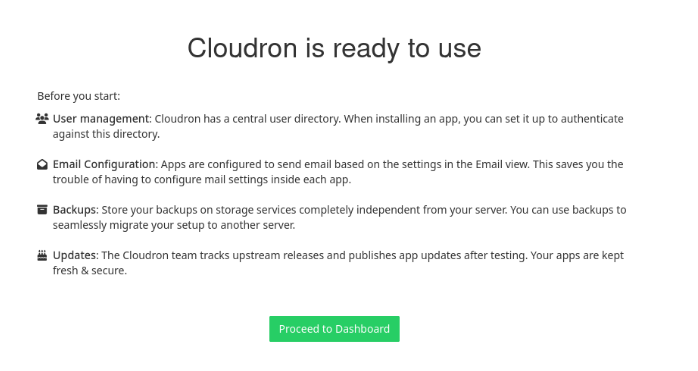
Accessing the Cloudron Dashboard
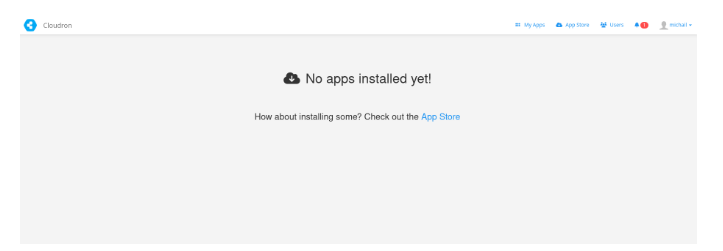
Once you’re in the Cloudron dashboard, you’ll see that no apps are installed by default. To install apps, you’ll need to connect to your Cloudron.io account.
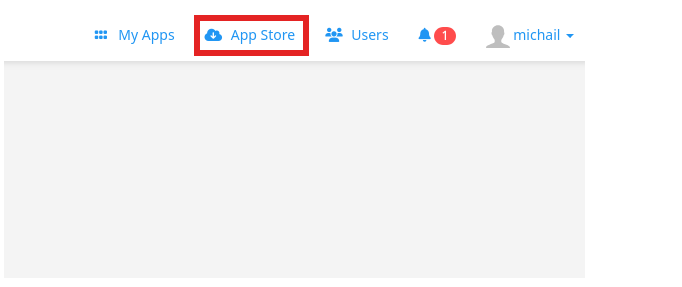
Please note that your Cloudron user is different from your Cloudron.io account, so you'll need to create an account on Cloudron.io. Registration is free:
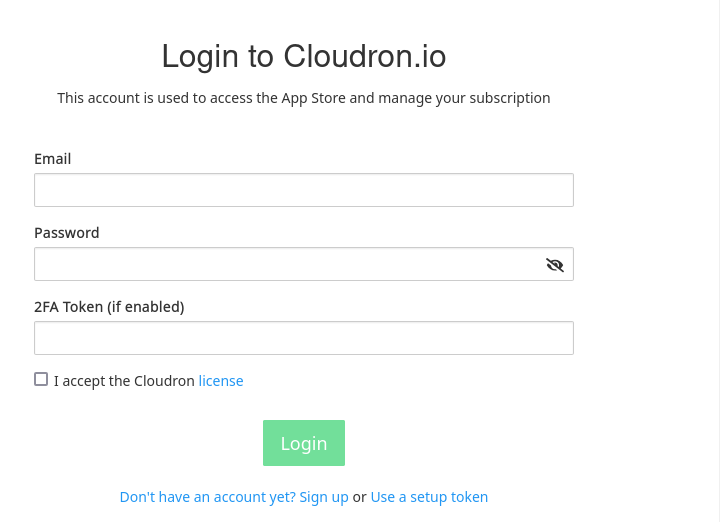
Cloudron.io Registration
After registering, go to the App Store section in your Cloudron dashboard and log in with your Cloudron.io credentials.
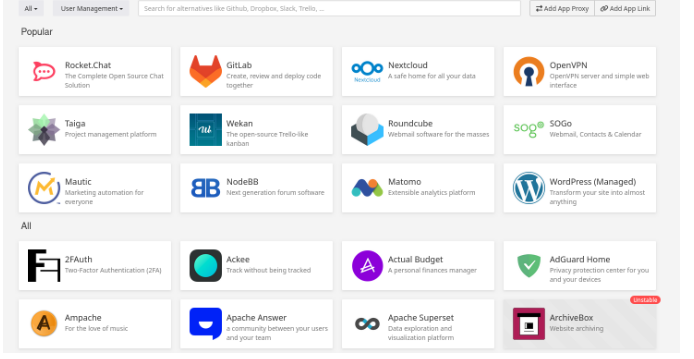
Once logged in, you can browse the app store and install the apps you need.

Managing Your Apps
All installed apps will appear on your Cloudron dashboard. By default, you can install up to two apps. For more details about plans, limitations, and pricing, visit the official Cloudron website:
Cloudron Pricing